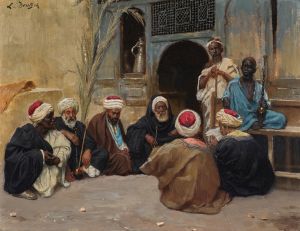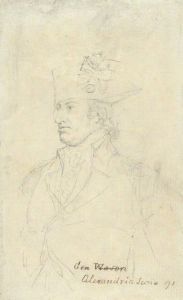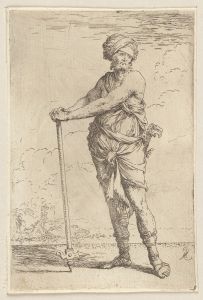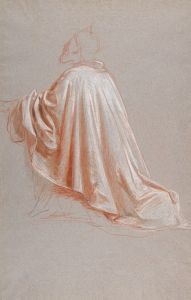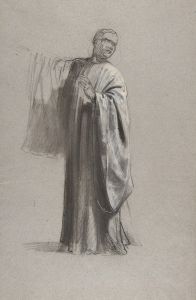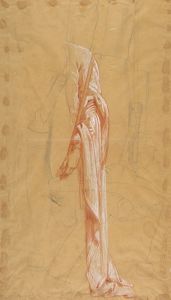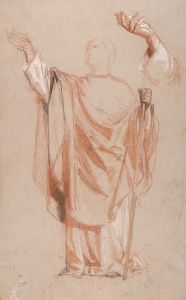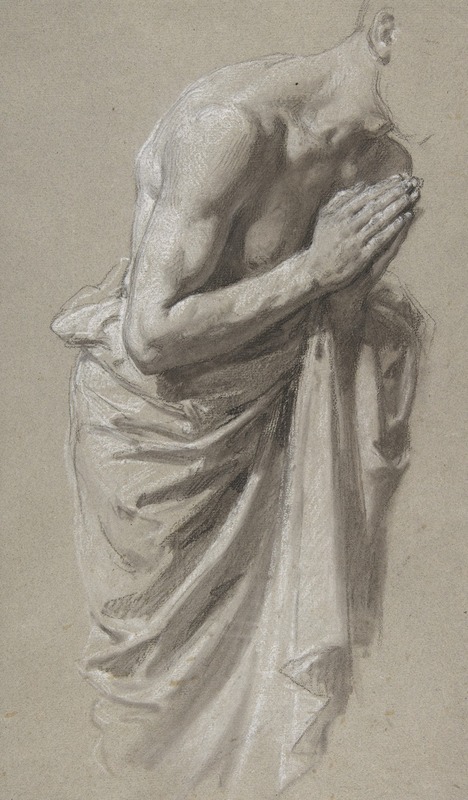
Study for Clovis
A hand-painted replica of Isidore Pils’s masterpiece Study for Clovis, meticulously crafted by professional artists to capture the true essence of the original. Each piece is created with museum-quality canvas and rare mineral pigments, carefully painted by experienced artists with delicate brushstrokes and rich, layered colors to perfectly recreate the texture of the original artwork. Unlike machine-printed reproductions, this hand-painted version brings the painting to life, infused with the artist’s emotions and skill in every stroke. Whether for personal collection or home decoration, it instantly elevates the artistic atmosphere of any space.
Isidore Pils was a notable French painter of the 19th century, recognized for his historical and religious compositions. One of his works, "Study for Clovis," is an intriguing piece that reflects his interest in historical subjects, particularly those related to French history. While specific details about "Study for Clovis" are limited, it is possible to contextualize the work within Pils' broader oeuvre and the historical significance of Clovis I.
Isidore Pils was born on July 19, 1813, in Paris, France. He studied at the École des Beaux-Arts under François-Édouard Picot and achieved early success with his painting "Saint Peter Healing the Lame Man at the Door of the Temple," which won the Prix de Rome in 1838. This accolade allowed him to study in Rome, where he was influenced by the works of the Italian Renaissance and Baroque periods.
Pils is known for his detailed and dramatic style, often focusing on themes of patriotism and religious devotion. His works frequently depicted significant events in French history, aligning with the 19th-century French academic tradition that valued historical painting as a means of national expression.
Clovis I, the subject of Pils' study, was the first king of the Franks to unite all the Frankish tribes under one ruler, changing the leadership from a group of royal chieftains to rule by a single king. His reign marked the beginning of the Merovingian dynasty, and he is often credited with laying the foundations for the modern state of France. Clovis is also notable for his conversion to Christianity, which had a profound impact on the religious landscape of Europe.
"Study for Clovis" likely served as a preparatory work for a larger composition, a common practice among artists of the time to explore themes, compositions, and figures before committing to a final piece. Such studies were integral to the academic painting process, allowing artists to refine their ideas and techniques.
While specific information about "Study for Clovis" is scarce, it can be inferred that the work was part of Pils' exploration of significant historical figures and events. His interest in Clovis aligns with the 19th-century French fascination with national history and identity, particularly during a period when France was undergoing significant political and social changes.
Isidore Pils' contributions to art extend beyond his historical paintings. He was also a respected teacher, appointed as a professor at the École des Beaux-Arts in 1863. His influence on the next generation of artists was significant, and his works continue to be studied for their historical and artistic value.
In summary, while detailed information about "Study for Clovis" is limited, it is representative of Isidore Pils' broader artistic focus on historical themes and his contribution to 19th-century French painting. The work reflects both his technical skill and his engagement with the historical narratives that shaped French national identity.





